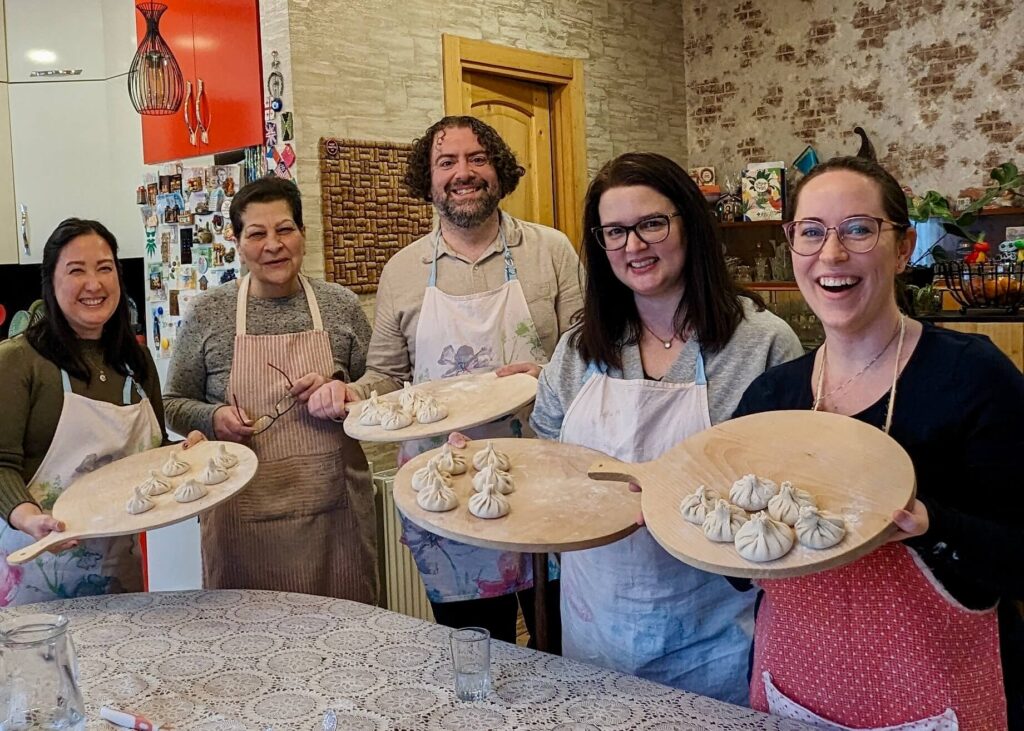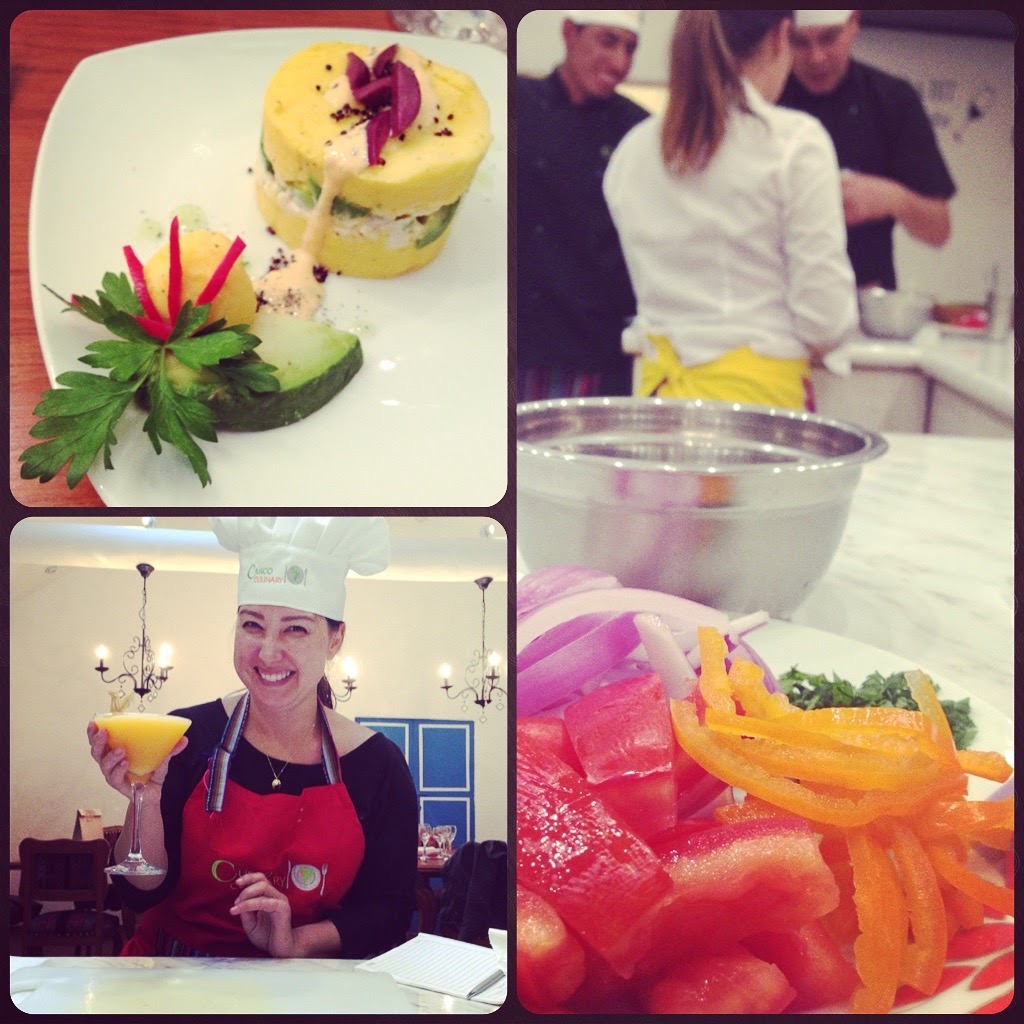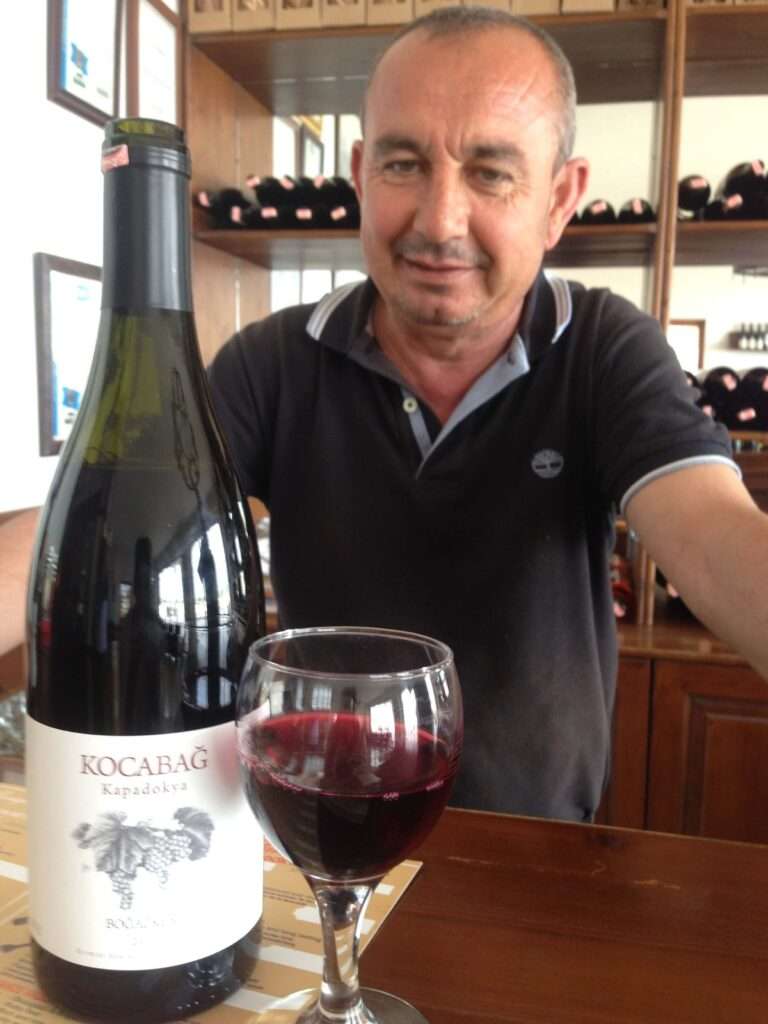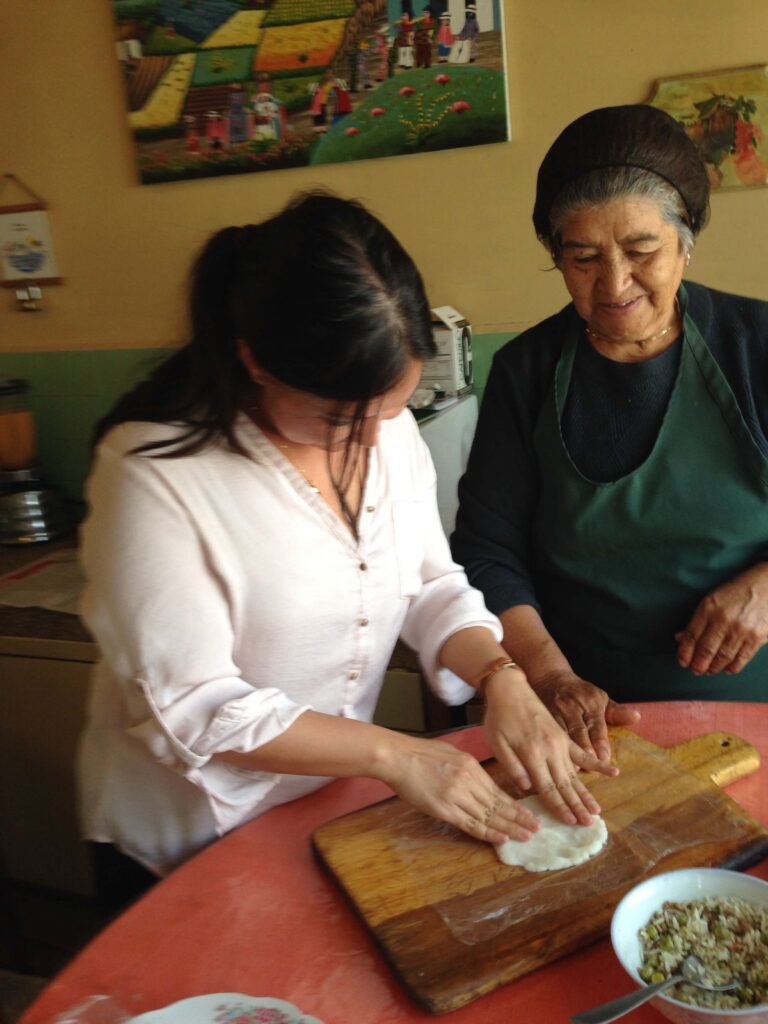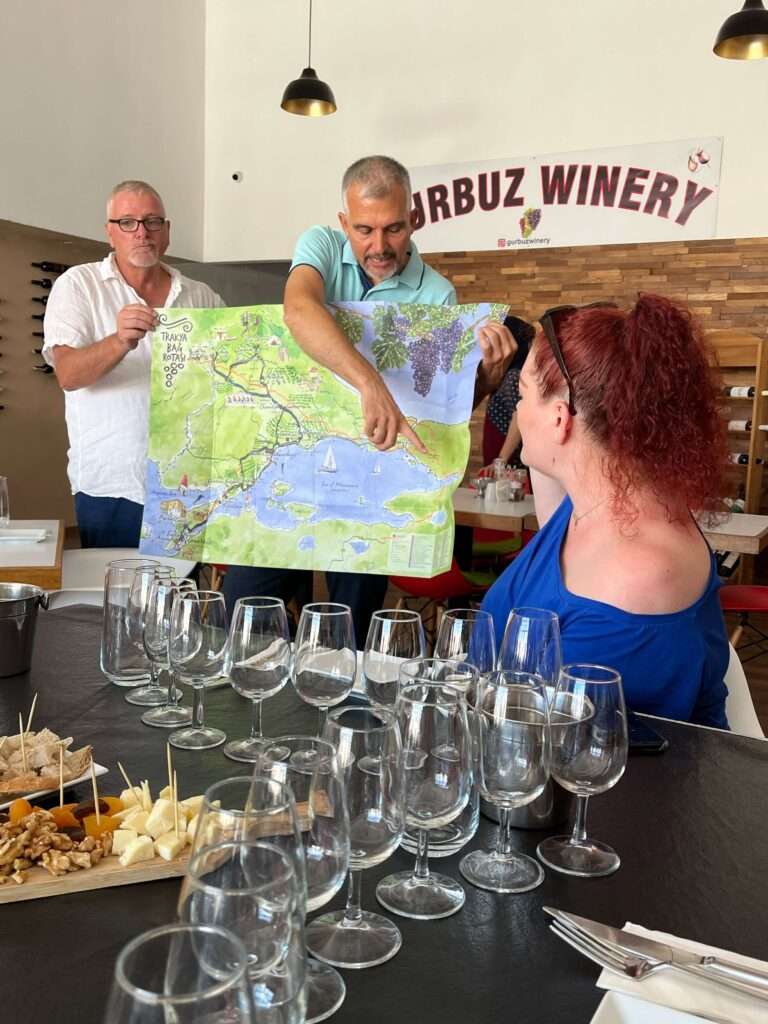How to Choose the Best Culinary Experience on Your Next Trip
This post may contain affiliate links, meaning I receive commissions for purchases made through those links at no cost to you. Please read my full disclosure for more information.
In just about every new place I visit, I always try to book a culinary activity as close to the beginning of my trip as possible. It’s a strategy that’s paid off in so many ways – by helping me to maximize my time (plus restaurant and sightseeing choices) for the rest of the trip, giving me insights into local dishes I might see on menus later, and even introducing me to like-minded travelers who turn into friends! As a former food tour guide myself, I know that the people who turn up to food tours are often adventurous and savvy travelers.
I’ve taken food tours and cooking classes in more than 15 countries around the world and I’ve even written about it for Lonely Planet. I love them so much that I made it the topic of my first-ever virtual summit presentation and it’s something I consider a core strategy for quickly getting deeper into the layers of a destination.
But I realize not everyone is sold on spending time and money on a food tour, cooking class or tasting activity. You might not even realize how cost effective it can be!
In this post, I’ll walk you through what to expect from different types of culinary experiences and pros and cons of food tours vs cooking classes vs tastings or pairings. I’ll also cover some of the things you might look for when booking a culinary experience and give you a few of my favorites.
Ready? Let’s dive in…
Table of Contents
How to choose your next culinary adventure
What to expect
If you’ve never been on a food tour or taken a cooking class, you may be wondering what to expect. Although each experience varies based on the location and the person leading the tour, here’s a general idea of a few different options you might commonly see:
Food tours
Food tours are one of my favorites! Generally a food tour will require some walking with samples of different dishes or street food items provided at each location. You’re sometimes seated indoors or you may be gathered in a group standing outside. Less commonly, you may also be driven – our food tour in Honolulu consisted of both walking through a market area and a bit of driving to places that were further away. In between stops, you will get to hear from your guide about history, culture and of course foods of the place you are visiting. Don’t be afraid to ask questions!
One thing I love about food tours is that they introduce you to tastes of way more dishes than you would get to try on your own, and possibly things you wouldn’t think that you’d like. It’s true you might not like everything and that’s totally ok – you’re not necessarily meant to! But at least you didn’t have to order a whole dish of it to know that, right? On a food tour in Ireland, I remember trying raw oysters for the first time (thinking that I hated them) but it totally changed my mind – and to this day, I adore them!
Pros & Cons of Food Tours
Pros: You can get in some sightseeing, while filling up with local food and insider knowledge! If you have limited time in your destination, this is a great way to make the most of your time and cover more ground. Since your guide is a local, they can help you with recommendations, like where to get a drink after the tour, or their favorite place to pick up souvenirs.
Cons: If you have mobility issues, this may not be the choice for you. Wear appropriate footwear for uneven streets like cobblestones and be sure you’re ok walking or standing for longer periods. Food tours usually take at least 2-3 hours, but some can run even longer – which for me is usually a good thing! But if you’re on a tight schedule, be mindful of the time and be sure to let your host know when you arrive if you have a reservation, flight, or other activity booked afterward.
>> Some of my favorite food tours have been: Ultimate Pinxtos and Wine Tour (Devour Tours) in San Sebastian, Savor Seattle’s tour of Pike Place Market and Taste of Lisboa‘s “Lisbon Roots” tour in Portugal.
Cooking classes
Whether you’re a novice home cook or have no experience at all, don’t worry – cooking classes are usually appropriate for all levels and the instructors are there to help you stay safe and to walk you through the process. Even if you are a pro in the kitchen, a cooking class is one of the best ways to get familiar with local spices, ingredients and techniques.
Sometimes a cooking class will have a short walking component beforehand – perhaps getting familiar with the neighborhood or going to a local market to pick up some ingredients. The actual preparation of the food is usually hands-on, everyone participates and then you’ll sit down to enjoy the meal together at the end. You’ll take home a copy of the recipes at the end of the class, don’t be shy to ask for them if they’re not provided.
Cooking classes can last anywhere from 2 to 4 hours or so, depending on how much of the prep is done in advance and whether or not you’ll have a tour to gather ingredients at the beginning.
Pros & Cons of Cooking Classes
Pros: This is a great way to bring the flavors of your destination back to your home kitchen. Learning about what spices or ingredients go into the common dishes of the place you are visiting can also help you to be more adventurous with ordering later. It can be a great rainy-day activity since you’ll be indoors, and an alternative to a “regular” meal.
Cons: If you prefer someone else to do the cooking, it is possible to find cooking classes that are more “demonstration style”, where the chef does the cooking and talks you through it. But in general it’s probably best to opt for a food tour or tasting instead. A cooking class may take up a might more time in your day than just sitting down to eat at a restaurant.
>> You can read my detailed reviews of two of my favorites in South America: Cusco Culinary in Peru and Uncorked Chile.
>> I got to write a piece about 5 of my favorite cooking classes in the world for Lonely Planet, including Cookistan in Istanbul, Baan Thai Cookery in Chiang Mai, and learning how to make pasta and tiramisu class in Milano, and khinkali and khachapuri at a wine bar in Tbilisi, and sushi and tea ceremony in Tokyo.
Tastings & Pairings
If you’re visiting a famous wine region, or someplace known for their craft beer, you can search for wine or beer tastings by looking up bars or restaurants that specialize “flights” where you can sample a small amount of a few different varieties. Wine or beer pairings are another way to try out which drinks complement the local foods.
If the region you are trying to cover is large, you may even consider guided tours or hiring a driver – so someone else can do the driving if you need to cover more ground! I’ve done wine tours by bike in Napa Valley and once did a wine tasting by helicopter in Oregon!
There are lesser known regional spirits to look into as well – I did a wonderful tsipuoro tasting at Cinque Wine Bar in Athens for example, and we loved visiting a cider house in Basque Country in Spain.
For those who don’t drink alcohol, there are SO many options for tastings these days, and not just alcoholic ones! I did a fantastic olive oil tasting in Kalamata, recently for example. And many restaurants are starting to offer “mocktail” pairings as an alternative to wine pairings. We loved learning about coffee in Salento, Colombia. Chocolate tasting, cheese and charcuterie are all great choices that might give you ideas for a picnic later, or souvenirs to take home.
Pros & Cons of Tastings and Pairings
Pros: Signing up for a tasting or paired dinner can be a good option if you have packed your day with sightseeing already and don’t have time for a tour. You can try a few styles and snap photos of the bottles of anything that you enjoy so you can buy a bottle to take home in your suitcase. You’ll get expert help so you don’t end up sticking only to things that are already familiar, you may find a new favorite!
Cons: Wine tastings in wine country regions are so beautiful but please don’t drink and drive! Consider hiring a driver or booking a tour that takes you to multiple wineries so someone else can do the driving. You may not get to visit every winery on your list this way, if the itinerary is set in advance.
>> Some of my favorite places for wine tastings have been: Cinque and Tanini Agapi Mou in Athens, Wayana in Istanbul, wine tasting day trips from Cape Town, the wine tents at the Alba White Truffle Festival. You can also book private wine tastings in Istanbul with Andrea Lemieux, author of The Essential Guide to Turkish Wine
Things to consider when comparing culinary activities
Reading reviews is so important when it comes to booking a tour and a bit of reading between the lines can really make or break the experience. Here are a few things that I look for specifically:
Language vs local knowledge
This is a tricky one. I always try to prioritize someone born and raised in a place, as they will have a deeper understanding of the nuances of culture and may be able to share family recipes. For example there were many cooking classes available in Milan, but I chose to book with Pasta Pietro who shared his grandmother’s recipes for pasta and tiramisu. When I was a food tour guide in Hawaii, I absolutely loved answering people’s questions about what it was like growing up there or sharing traditions that were unique to our culture.
If you are visiting a place where English is not as widely spoken, it’s sometimes common to find guides who are not necessarily born and raised in the place, but who live there currently and may have ties to the place like having studied or raised a family there. This can be ok too! I can give you a great food tour in Istanbul, for example, but I won’t be able to explain to you cultural changes over the years and what it was like growing up in a place, no matter how much I love it currently.
So even if there can be a bit of a language barrier I always try to look for someone with deep ties to the place – you may find hints of this in the description of the activity or in the reviews. I’ve even taken tours completely in another language, for example a wine tour in Turkey where there was no English option – a combination of Google translate and body language got us through just fine and it was a great way to connect! Turkish Wine expert Andrea Lemieux always recommends looking up a few key grapes or styles in your destination so you can build on that when you go into a tasting or are looking at a wine list.
Company reputation & trusted recommendations
There is so much competition in culinary tourism offerings these days and the quality can vary widely from tour to tour. Besides looking at recommendations and ratings, you might also want to start with choosing companies you’ve had a good experience with.
For example, in Europe I often prioritize booking a food tour or cooking class with Devour, as they have high standards for their guides and the quality of their experiences.
Another way to find a good tour is to follow food or travel bloggers you trust (hmmm, I may just know someone….) 😉 and take their reviews or recommendations into account. For example, I love to write about the tours and classes that I’ve taken and will only share the best of the best.
Price
It’s true that sometimes you get what you pay for! Please read through reviews and prioritize them over price to get the best possible experience. But don’t forget, when comparing with other activities (for example a regular walking or history tour) you are also covering the cost of a meal – sometimes more than one! I’ve often gone home with leftovers from cooking classes.
(And it may be a bit embarrassing to admit, but I may or may not be known for bringing collapsible tupperware with me to food tours… First of all, I just dislike food waste, but secondly I often like the things that others don’t and this way I have a snack later. Haha!)
Dietary restrictions
If you have dietary restrictions, you should check with the company or your host before booking and also reconfirm with the guide at the start of the activity. For example with Hawaii Food Tours, we were able to provide some substitutions in advance and I always did my best with trying to find extra dishes that could work for vegetarians or those with food allergies.
It wasn’t always possible, and it’s not always going to be the best experience that way – companies work hard to source and work with the individual restaurants and shops that go into a tour. But it doesn’t hurt to ask (in advance). Please don’t spring dietary requests on your tour operators on the day of as things may have been pre-ordered in advance.
What about tipping?
In many countries, tipping is not standard and even in the US, not everyone left us a tip at the end of a tour. But please know that there is a lot of work that goes on behind the scenes to coordinate a culinary experience – if it runs smoothly, you will likely not even notice!
Gratuities are a way to say “thanks” and are always much appreciated, as are kind words and positive reviews left after the tour. If you enjoyed your tour, it will make your guide’s day if you mention their name in the review! I will (almost) always leave a small tip at the end of a food tour as I’m leaving.
Where to book a culinary experience
- It is easy to find food tours, cooking classes and tastings or pairings with a google search, but I often will turn to companies that I trust and have good experiences with.
- Devour Tours is my favorite food tour company – mainly operating in Europe with a handful in the US. They started in Spain originally and I found them through the super helpful videos of one of the founders. I’ve since gone on tours in Barcelona, San Sebastian and a non-food tour of the Acropolis with their partner company, Walks. They have very high standards for the guides and take guest feedback seriously to continue to improve.
- You can also find many food tours and cooking classes directly through booking platforms like Viator and Get Your Guide. These sites are marketplaces for tour operators so you will want to look at the actual provider of the tour and read reviews carefully.
- Other sites that allow individuals to make their own offerings include EatWith, Cookly and Airbnb Experiences.
- In Istanbul specifically, I recommend Vines & Pearls and Culinary Backstreets for tours, and Cookistan for amazing cooking classes.
>> For a more detailed list by country, check out my lists of Food Tours and Cooking Classes that I recommend (coming soon) and check out the general tips about the flavors of the world.
How to Prepare
- Come hungry! Eat lightly before a culinary experience as you will leave full!
- Wear weather-appropriate clothing and comfortable footwear for periods of walking, standing, or uneven pavement.
- Ask questions and don’t be afraid to show your enthusiasm. I use the notes app in my phone or bring a small notebook to take notes. Check if the recipes will be sent to you later or if you need to take notes during the class.
- Think beyond the tour – find out what spices you might want to buy to take home with you to replicate a dish, or look into a cookbook that includes other dishes.
- Get advice – I often have a general plan for the rest of my trip and will ask other participants who may have done similar activities or get local insights from the guide.
Traveling soon?
I hope this has inspired you to book a culinary experience at the beginning of your next trip! Feel free to tag me on Instagram @MaliaYoshioka and let me know how it went!
✈ Need help with planning your next trip? Check out my travel planning services including done-for-you guides and maps, consultations and ebooks.
🍽 Want a daily dose of foodie travel inspiration? Join the free Facebook Community to swap recommendations and weigh in on the important discussions like savory vs week snacking and what’s the best food city in the world?
📫 You can also sign up for my weekly newsletter to get tips from Hawaii to Istanbul and everywhere in between, delivered on Fridays straight to your inbox.

